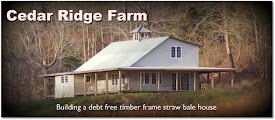Blueberry propagation
We have a few blueberry bushes that we’ve planted in the previous three years. There’s a local blueberry farm that sells berries and plants. They actually sell thousands of plants every year that get shipped all over the world. Last year Dad, Danny, and I picked berries for a couple of days for them. We took payment in blueberries rather than in cash.
Our bushes are small yet, and there aren’t very many. We’d like to be able to grow more of our own. We could buy plants from Bluegrass Blueberries, or we could start our own to set out. Danny has been picking berries again this year, and he asked a lot of questions about blueberry propagation. Apparently, it is quite easy to new plants going.
For our propagation endeavor, I set an old tractor rim that was in my barn out near the garden and filled it with peat moss. Peat moss can be bought from places that sell plants and gardening supplies. Another alternative that works well is saw dust. I believe that ra
Once filling the rim with peat moss, I began to add water in order to soak it well. It took a lot of water. We needed it to be well saturated. I think we added enough water to make it a peat bog.
Once the propagation area was ready, Danny and I went to get some blueberry clippings. We cut new growth off of the plants. Some cuttings were only three or four inches long, but others were over a foot. 
We took the cuttings to the tire rim. Danny then began to cut the longer ones into shorter lengths. He cut them so that they each had at least three leaf nodes. We removed all but the top one or two leaves and then stuck the cuttings into the wet peat moss where they’ll stay for the next year or so. I’m keeping them well watered so that the peat moss stays moist.
It was cloudy and rainy when we put them out and for the next couple of days which is good because you don’t want 
We put 70 cuttings into the peat moss. We hope to have at least 50 plants survive until next fall (2010). We’ll have prepared a place for them and will set them out at that time. They do better when set out during the fall as opposed to being set out in the spring.





